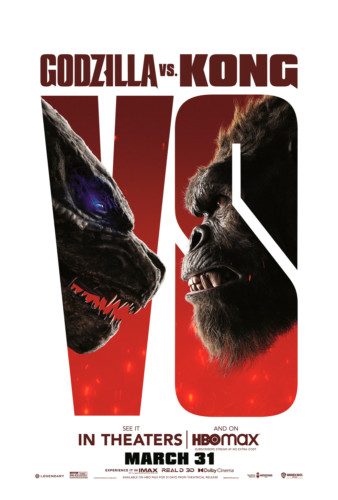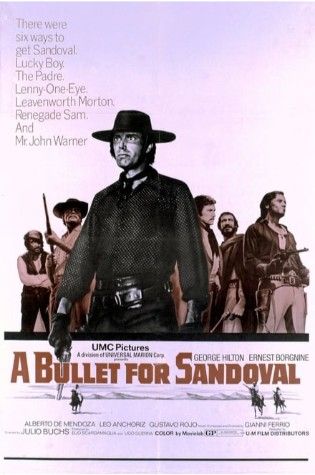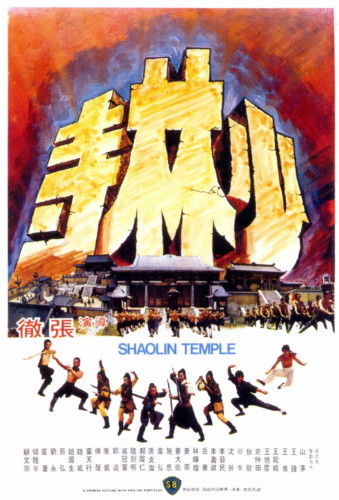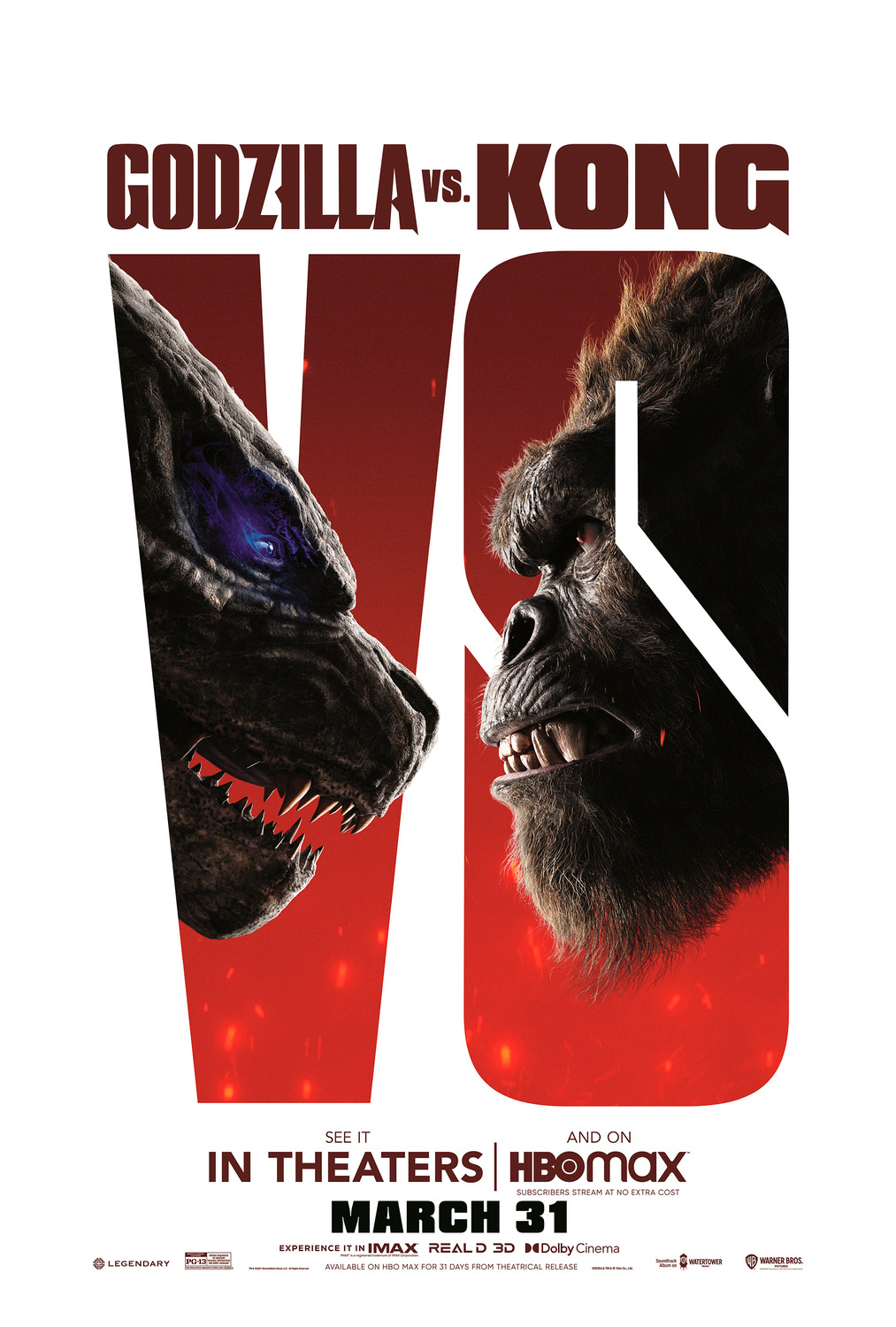 Godzilla vs. Kong (2021) – 2014’s Godzilla worked, in my humble opinion, largely because the Big G wasn’t a character or personality so much as a force of nature, and people just did things around his feet to save themselves. Some of that was lost in Godzilla: King of the Monsters (2019), as Godzilla was superimposed on a Hollywood template human story.
Godzilla vs. Kong (2021) – 2014’s Godzilla worked, in my humble opinion, largely because the Big G wasn’t a character or personality so much as a force of nature, and people just did things around his feet to save themselves. Some of that was lost in Godzilla: King of the Monsters (2019), as Godzilla was superimposed on a Hollywood template human story.
And then in Godzilla vs. Kong, they screwed up both the monster dynamics and the human interest story, leaving us with 113 minutes of blathering-whatever-the-heck. It’s like the producers said to Screenwriting Team A, “Give us nothing but awesome!” Then handed it to Screenwriting Team B and said, “Add some human interest and try to make it make sense!” Then they handed it to Team C, “Add some awesome!” Then to Team D, “Add the people stuff and make the last guys’ stuff make sense!” Repeat the cycle fifteen more times, and you end up with a bunch of random explodey stuff with feints at making it all hang together with leftover scraps of peopley stuff.
It shouldn’t be this hard to make an entertaining “Lizard Fights Monkey” movie, folks.
 A Bullet for Sandoval (1969) – I think having heard good things about this spaghetti western ended up prejudicing me against it when it only turned out to be fair-to-middlin.’ Corporal Warner (George Hilton) deserts from the Confederate Army to go back to his girlfriend, who’s had their son in his absence, but when he gets there, the girlfriend is dead from cholera and her dad Sandoval (Ernest Borgnine) tosses Warner out on his ear with the newborn. Between the Confederates looking for him and the threat of cholera, no one will give him milk for the baby, who dies. So Warner goes off the deep end, recruits some old army buddies plus some other vile outlaws, and becomes a merciless bandito, always looking for a way to get back at Sandoval.
A Bullet for Sandoval (1969) – I think having heard good things about this spaghetti western ended up prejudicing me against it when it only turned out to be fair-to-middlin.’ Corporal Warner (George Hilton) deserts from the Confederate Army to go back to his girlfriend, who’s had their son in his absence, but when he gets there, the girlfriend is dead from cholera and her dad Sandoval (Ernest Borgnine) tosses Warner out on his ear with the newborn. Between the Confederates looking for him and the threat of cholera, no one will give him milk for the baby, who dies. So Warner goes off the deep end, recruits some old army buddies plus some other vile outlaws, and becomes a merciless bandito, always looking for a way to get back at Sandoval.
It’s a pretty structure-less plot, and Sandoval doesn’t even get it in the end (oops, spoilers) with a bullet.
 Shaolin Temple (1976) – I’ve seen several Shaw Brothers productions set just after the burning of the Shaolin Temple, including at least one which starred Sheng Fu as pseudo-historical Shaolin folk hero Fong Sai Yuk/Fang Shi Yu. This one places Sheng Fu as Fang Shi Yu in the temple in the lead-up to its attack and burning by the ruling Manchus. It’s about twenty minutes of story spread out across two hours, and such story as there is includes dead-ended subplots and unfunny comic relief; the rest of it is taken up by SO MUCH TRAINING FOOTAGE, which is really why these things exist. The twenty-minute combat sequence that comprises the climax really has to be seen to be believed.
Shaolin Temple (1976) – I’ve seen several Shaw Brothers productions set just after the burning of the Shaolin Temple, including at least one which starred Sheng Fu as pseudo-historical Shaolin folk hero Fong Sai Yuk/Fang Shi Yu. This one places Sheng Fu as Fang Shi Yu in the temple in the lead-up to its attack and burning by the ruling Manchus. It’s about twenty minutes of story spread out across two hours, and such story as there is includes dead-ended subplots and unfunny comic relief; the rest of it is taken up by SO MUCH TRAINING FOOTAGE, which is really why these things exist. The twenty-minute combat sequence that comprises the climax really has to be seen to be believed.
Sooner or later I’ve gotta read up on the actual history of that era so I’ll be able to place all of these characters and events, well known to kung fu movies’ original audiences, into context.

Watching the Godzilla vs. Kong trailer makes me wonder how many takes it took for these actors to be able to get through their lines without bursting into laughter. I don’t think Laurence Olivier could sell the line, “Godzilla is hurting people, and we don’t know why.”
I’m certain a woke actor could summon the necessary indignation at anything being *hurtful.*
Godzilla vs. Kong – Mindless fun. I enjoyed it.
Shaolin Temple (1976) – If you want to make sense of the whole story (without reading the 18th century Chinese novel “Evergreen”), you could probably watch the following movies like this:
1. The 36th Chamber of Shaolin (1978) – Tells the story of the monk San Te, who introduced the idea of teaching Shaolin kung fu to the laymen, instead of just monks.
2. The Men from the Monastery (1974) or Shaolin Avengers (1976) – Essentially the same movie, they let us know the reasons that Hu Hui-Chien and Fang Shiyu (or Fong Sai-Yuk) enter the temple; what happens during the brief interval that they leave the temple; and what happens to them after the burning of the temple.
3. Five Shaolin Masters (1974) – Tells the story of the five Ming Patriots (including David Chiang’s and Ti Lung’s characters–the ones who started movie wearing ponytails instead of queues) after the burning of the Temple.
correction:
#3 would be Shaolin Temple (1976), while #4 would be Five Shaolin Masters (1974).